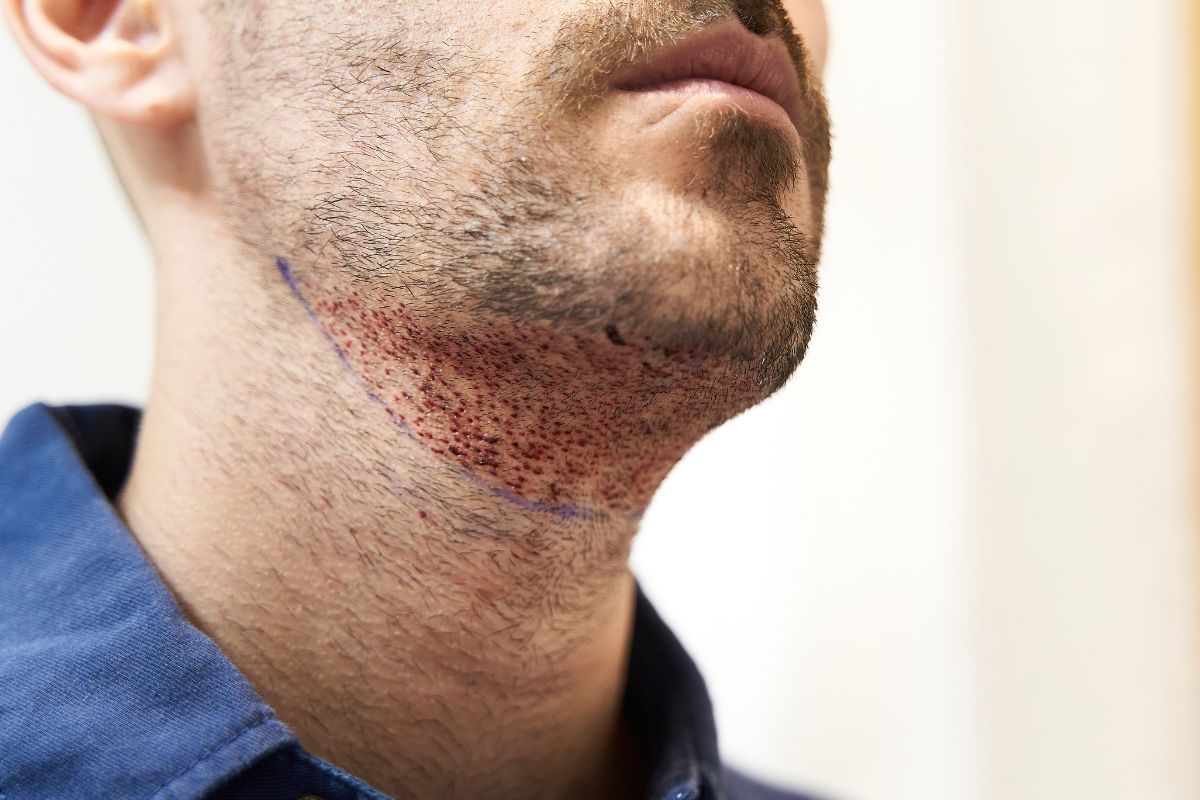Beard transplantation has become an increasingly popular option for men desiring a denser and more uniform beard. However, like any medical procedure, many myths and misinformation are circulating about beard transplantation. In this article, we will clarify some of the most common myths and separate fact from fiction.
What is a Beard Transplant?
Before we delve into the myths, it’s important to understand what a beard transplant is. A beard hair transplant, also known as a hair transplant for the beard, is a surgical procedure where healthy hair follicles are transferred from the donor area (usually the back of the head) to the beard areas that lack hair or have irregular growth.
Myth #1: Beard Transplants are Purely Cosmetic
Fact: While improving appearance is one of the main reasons men seek beard transplantation, this procedure can also benefit those suffering from hormonal disorders or medical conditions that cause beard gaps.
Beard transplantation can help create a more symmetrical and uniform appearance, improving self-confidence and perceptions of masculinity. However, it can also be a solution for those facing beard growth issues due to scars, burns, or other conditions that damage hair follicles.
How Does Beard Transplantation Work?
Beard transplantation is a surgical procedure involving the following steps:
Follicle extraction: Healthy hair follicles are extracted from the donor area, usually the back of the head, using the FUE (Follicular Unit Extraction) or FUT (Follicular Unit Transplantation) technique.
Preparation of incisions: In the beard area to be filled, the surgeon makes small incisions to receive the transplanted follicles.
Implantation of follicles: The extracted follicles are carefully implanted into the prepared incisions, following a natural beard growth pattern.
Recovery: After the procedure, there is a recovery period during which the transplanted follicles enter a shedding and growth cycle before fully settling.
Myth #2: Beard Transplants are Permanent
It’s a prevalent misconception to consider beard transplants as a permanent solution for those who lack beard hair or seek to enhance its density. This belief, however, simplifies the complex nature of hair growth and the life cycle of hair follicles. In reality, while beard transplants can provide a significant, long-term improvement in beard fullness and appearance, they are not immune to the biological processes that affect all hair follicles.
Understanding the Hair Growth Cycle
To comprehend why beard transplants are not entirely permanent, it’s essential to understand the hair growth cycle. Hair follicles go through a cycle that includes growth (anagen phase), transition (catagen phase), and rest (telogen phase). After the rest phase, the hair falls out, and new hair begins to grow from the follicle. This cycle is natural and occurs in all hair, including transplanted follicles.
Transplanted Follicle Life Span
When hair follicles are transplanted during a beard transplant, they are relocated but continue to operate under their natural cycle. Initially, after the transplant, the newly placed follicles will enter a rest phase, leading to what is known as “shock loss,” where the transplanted hair falls out. This is a normal part of the process, and new hair will begin to grow from these follicles within a few months.
As the transplanted follicles settle into their new location, they will produce hair that can last for many years. These follicles, however, are still subject to aging and the effects of dihydrotestosterone (DHT), a hormone that can cause hair thinning and loss. Over time, some follicles may gradually produce thinner hair or stop producing hair altogether, entering a prolonged dormancy stage.
Maximizing the Longevity of Transplanted Hair
Despite these challenges, there are ways to maximize the longevity and health of transplanted beard hair:
- Proper Post-Operative Care: Following the surgeon’s aftercare instructions meticulously can help ensure the best possible environment for the newly transplanted follicles to thrive.
- Healthy Lifestyle: A balanced diet, regular exercise, and avoiding smoking can contribute to overall skin and hair follicle health, supporting the longevity of the transplanted hair.
- DHT Blockers: In some cases, doctors may recommend medications or supplements that block DHT to help preserve the density of the transplanted hair.
- Regular Maintenance: Just like natural beard hair, transplanted hair benefits from regular grooming and care, including proper washing, conditioning, and trimming.
However, most men who undergo beard transplantation experience lasting results for several years, as long as they follow proper care and maintain good follicle health.
Myth #3: Beard Transplants are Painful
Fact: Beard transplantation is a minimally invasive procedure performed under local anesthesia. While there may be some mild discomfort, most patients report little to no pain during the procedure.
The doctor will apply local anesthesia to the donor area and the beard area to be treated, ensuring the patient does not feel pain during the extraction and implantation of follicles. After the procedure, there may be some swelling, mild discomfort, and crusting, but these are normal reactions and usually subside within a few days.
Experienced beard transplantation professionals employ advanced techniques to minimize discomfort and ensure the most comfortable experience possible for the patient.
Myth #4: Beard Transplants are Expensive
Fact and Fiction: The cost of beard transplantation can vary significantly depending on several factors, such as geographic location, the surgeon’s experience, and the extent of work required.
While beard hair transplant may be considered a significant investment for many, it’s important to remember that the results are long-lasting and can bring significant benefits to the patient’s self-confidence and self-image.
However, more affordable options exist, such as specialized hair transplant clinics that offer more competitive pricing. It’s crucial to research and compare options to find a qualified and trustworthy provider that fits your budget.
Myth #5: Beard Transplants Cause Visible Scarring
Fiction: With modern beard transplant techniques, such as FUE (Follicular Unit Extraction), visible scarring is minimized or virtually nonexistent.
In the FUE technique, hair follicles are individually extracted, leaving only small dots in the donor area that heal quickly and are virtually imperceptible. Moreover, since the donor area is usually the back of the head, any small scar will be hidden by the remaining hair.
Experienced beard hair transplant surgeons are highly trained to perform the procedure with precision and minimize the risk of visible scarring, ensuring natural and aesthetically pleasing results.
Conclusion
Beard transplantation is an effective and increasingly popular procedure for men desiring a denser and more uniform beard. However, it is important to separate fact from myth to have a clear understanding of what to expect.
While beard hair transplant is not a permanent solution and may carry a significant cost, it offers durable and natural results when performed by experienced professionals. With modern techniques and proper care, patients can enjoy a fuller beard and a more confident appearance, without excessive pain or visible scarring.
By debunking common myths, we hope that interested individuals can make informed decisions about whether beard transplantation is the right choice for them, based on scientific evidence and clinical outcomes.











